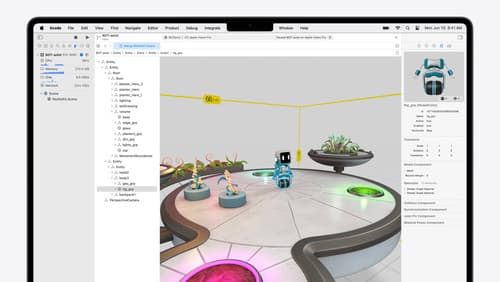How to bundle assets
Asked on 2024-07-30
1 search
To bundle assets effectively, you can use the USDZ format, which takes all dependencies for an asset, such as textures, and makes an internal file structure for them. This makes USDZ great for publishing and distributing assets. However, they can't be edited without unzipping.
For more detailed steps on how to bundle assets, you can refer to the session Optimize your 3D assets for spatial computing which covers exporting assets from DCCs and efficient texture use.
Here are the relevant sessions that might help you further:
- Optimize your 3D assets for spatial computing
- What’s new in USD and MaterialX
- Create custom environments for your immersive apps in visionOS
These sessions provide comprehensive insights into asset bundling, texture packing, and exporting workflows.

Break into the RealityKit debugger
Meet the RealityKit debugger and discover how this new tool lets you inspect the entity hierarchy of spatial apps, debug rogue transformations, find missing entities, and detect which parts of your code are causing problems for your systems.

Optimize your 3D assets for spatial computing
Dive into an end-to-end workflow for optimized 3D asset creation. Discover best practices for optimizing meshes, materials, and textures in your digital content creation tool. Learn how to harness shader graph, baking, and material instances to enhance your 3D scene while optimizing performance. Take advantage of native tools to work more effectively with your assets and improve your app’s performance.

Port advanced games to Apple platforms
Discover how simple it can be to reach players on Apple platforms worldwide. We’ll show you how to evaluate your Windows executable on Apple silicon, start your game port with code samples, convert your shader code to Metal, and bring your game to Mac, iPhone, and iPad. Explore enhanced Metal tools that understand HLSL shaders to validate, debug, and profile your ported shaders on Metal.
